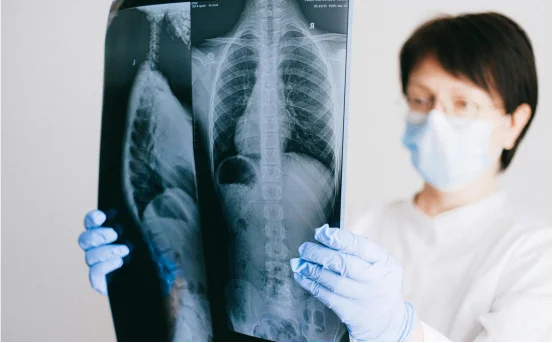Microvascular Decompression Surgery (MVD) is a highly-specialized neurosurgical procedure utilized to treat ailments like Trigeminal Neuralgia, Hemifacial Spasm and Glossopharyngeal Neuralgia. These disorders result from the pressure of the cranial nerves usually caused by an artery pressing into the nerve.
How do doctors decide the patient’s suitable candidate for this complicated but effective procedure? The answer lies in an an accurate and precise diagnosis.
Why Diagnosis Is Crucial Before MVD Surgery
The efficacy in Diagnosis for Microvascular Decompression Surgery heavily depends on the quality of the diagnosis. MVD is an extremely delicate procedure therefore it is crucial to identify:
-
It is the exact nerve that is involved
-
If there is vascular compression is there
-
If the patient’s symptoms match with conditions that can be treated by MVD
Correct diagnosis assists in the prevention of mistaken diagnosis and ensures superior surgical outcomes and minimizes the risk of unnecessary surgery.
Common Symptoms Leading to MVD Consideration
A patient is usually recommended for MVD in cases where conservative treatments (like medicines) do not work, and the signs indicate nerve compression. The most prevalent conditions and symptoms:
1. Trigeminal Neuralgia
-
Extreme facial pain, sudden and severe on one side
-
It can be activated by touching chewing, a slight smack, or an air breeze
-
Pain episodes that last for a couple of from seconds to minutes
-
Oft, it is called “electric shock-like” pain
2. Hemifacial Spasm
-
Twitching or spasms that are not voluntary to one or both sides of your face
-
Starts around the eye and can extend to the mouth, cheeks and neck
-
It can be worsened by stress or fatigue
3. Glossopharyngeal Neuralgia
-
Acute ear or throat pain frequently misinterpreted as tonsillitis or dental problems
-
It can be triggered by swallowing, coughing or even talking
Detailed Diagnostic Process for Microvascular Decompression Surgery
The diagnosis is typically made by an neurosurgeon or neurosurgeon and involves a variety of procedures and diagnostic tools:
1. Medical History & Symptom Evaluation
This is the initial and most important step. The doctor asks specific questions regarding:
-
Duration, severity and nature of symptoms
-
Triggers (e.g. eating, winds, a light contact)
-
Previous treatment or medication that you have tried
-
A history of head trauma or neurological conditions
Why this is important Conditions such as Multiple Sclerosis (MS) can appear similar to signs of trigeminal Neuralgia Therefore, having a detailed pathology can aid in distinguishing.
2. Physical & Neurological Examination
A thorough cranial nerve examination is carried out to confirm:
-
Sensory function in the face
-
Control and strength of muscles
-
Reflexes and coordination
This can help determine whether the problem is specific or a part of a larger neurological condition.
3. MRI (Magnetic Resonance Imaging)
MRI is considered to be the most reliable imaging technique for determining nerve compression.
Types of MRI Used:
-
high-resolution MRI using contrast reveals veins that compress the nerves.
-
FIESTA and CISS sequences The latest MRI techniques provide clear images of the nerve and adjacent veins or arteries.
Purpose:
-
To exclude tumors and multiple sclerosis.
-
To confirm vascular compression
-
To determine the type and place of compression
4. MRA (Magnetic Resonance Angiography)
MRA assists in identifying the blood vessels in the brainstem. It is commonly used along with MRI to:
-
Confirm vascular loop presence
-
Examine whether the artery or vein is impinging upon the cranial nerve.
5. CT Scan (Less Common)
While MRI is recommended, CT scan can be utilized:
-
If MRI is not appropriate (e.g. in patients with implants made of metal)
-
To determine bony structures that surround the nerve
6. Electrophysiological Tests (Optional)
These are not the norm, however they can be used in unspecified situations:
-
EMG (Electromyography): Helps evaluate nerve-muscle interaction
-
Study of nerve conduction Look for abnormalities in the nerve signal
7. Differential Diagnosis
Before determining the necessity for MVD Doctors make sure that they rule out any other cause:
-
Multiple Sclerosis (MS)
-
Tumors pressing down on the nerve
-
Dental issues
-
Sinus or ear infection
-
Face pain is a psychological cause
In the case of MS-related Trigeminal Neuralgia, MVD is generally not advised however alternative treatments such as medications or radiofrequency ablation could be more appropriate.
When Is Microvascular Decompression Recommended?
After a thorough evaluation, MVD is recommended when:
-
The signs are typical and debilitating
-
MRI/MRA confirms neurovascular compression
-
Other treatment options (medications such as carbamazepine) do not work or may result in adverse negative effects.
-
The patient is general good health and is able to undergo surgery.
Treatment Plan Based on Diagnosis
If the diagnosis is confirmed, it’s time to determine if you are suitable for MVD:
-
Patients receive counseling prior to surgery
-
Benefits, risks and alternatives are analyzed
-
The imaging is analyzed by the neurosurgical team.
Conclusion
The process of identifying a patient who is undergoing Microvascular Decompression Surgery involves a combination of clinical knowledge as well as high resolution imaging. The procedure ensures that only the best candidates are treated in this specialized procedure, resulting in improved outcome and less pain.
If you or someone else in your family suffers from facial muscles spasms, facial pain, or nerve-related discomfort, speak with an expert neurosurgeon or neurologist to determine the possibility that MVD is the best option.






















